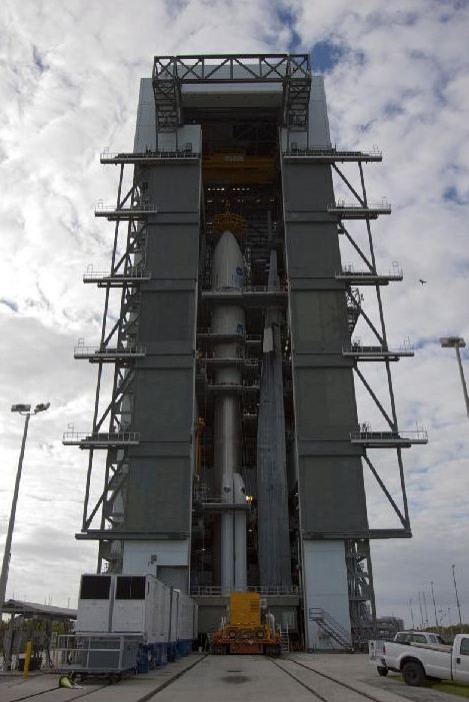NASA Preps for Mars 'Curiosity' Rover Launch

NASA is at the final stages of preparation for the launch of its most advanced Mars Rover that is set for take- off from Florida's Space Coast next week.
Armed with ten instruments, the new rover, dubbed Curiosity, has more scientific capability than any other rover sent into space. For the first time the rover will have the capability to dig up rocks in search for signs of life in the Gale Crater on Mars. Analytical tools on the rover will characterize the environment, weather and natural radiation that can impact future human missions.
Gale gives us a superb opportunity to test multiple potentially habitable environments and the context to understand a very long record of early environmental evolution of the planet, said John Grotzinger, project scientist for the Mars Science Laboratory at the California Institute of Technology in Pasadena. The portion of the crater where Curiosity will land has an alluvial fan likely formed by water-carried sediments. Layers at the base of the mountain contain clays and sulfates, both known to form in water.
The Rover comes with a mast that can extend to 7 feet (2.10 meters) above ground, allowing far-off targets to be studied. Mars Science Laboratory builds upon the improved understanding about Mars gained from current and recent missions, said Doug McCuistion, director of the Mars Exploration Program at NASA Headquarters in Washington. This mission advances technologies and science that will move us toward missions to return samples from, and eventually send humans to, Mars.
The 1,980-pound Rover that took seven years to develop now sits atop an Atlas V Rocket weighing 15 times more than any of its predecessors. It will lift off from Cape Canaveral Air Force Station on Nov.25, scheduled to land on the red plant in August 2012. The weight of the Rover could pose a risk during landing as Curiosity is too heavy to use an air-bag cushioned touchdown that previous rovers used. The landing will take place on a smaller landing target to ensure precision, according to the news agency.
No single mission has answered the question of whether life exists on Mars, but NASA believes Curiosity's mission will obtain the evidence and prerequisites for signs of life that will help steer potential future mission.
© Copyright IBTimes 2024. All rights reserved.





















